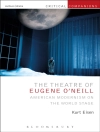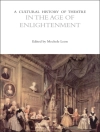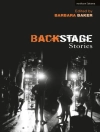The ballet Don Quixote, with music by Ludwig Minkus and scenario and original choreography by Marius Petipa, is one of the most enduring creations to have emerged from the flowering of the ballet in late 19th-century Russia. Still popular, it has become a standard repertory piece in ballet companies all over the world. The work was first performed in Moscow at the Bolshoi Theater on 14/26 December 1869. The plot, in four acts and eight scenes, was based on an episode which Petipa had developed from the second part of Cervantes’s novel, relating the love story of Quiteria (known as Kitri in the ballet) and Basilio. Petipa devised the original version to suit the unsophisticated taste of Moscow’s audiences. Soon after, he prepared a version for St Petersburg, using the same music and designs, but with major choreographic revisions. This St Petersburg version, premiered on 9/21 November 1871, was in five acts (eleven episodes, a prologue and an epilogue). It took into account the Imperial capital’s preference for a more classical interpretation of the ballet and amounted to a new and very different version.Alexander Gorsky staged his Moscow revival of Don Quixote in 1900 using Petipa’s St Petersburg scenario and some of his choreography, and reducing the work to four acts. Two years later, in 1902, the director of the Imperial Theatres, Vladimir Teliakovsky, invited Gorsky to restage an updated version of Don Quixote at the Maryinsky Theatre in St Petersburg. The ballet became a staple of the repertoires of the Moscow Bolshoi Ballet and the Leningrad Kirov Ballet and was regularly modified as it was continually restaged, ending up as three acts with a prologue and six scenes. This version of the score, containing several interpolated pieces by other repertory dance composers, is the standard performing edition used in Russia.Don Quixote was first seen outside of Russia in an edited two-act version danced by Pavlova and her company in England in 1924. The first time the full work was staged for a Western company was by the English Ballet Rambert in 1962, by Witold Borkowski. Notable productions outside of Russia to Minkus’s music were those by Rudolf Nureyev for the Vienna State Opera (1966), and Mikhail Baryshnikov for American Ballet Theatre (1978), which for the most part followed the traditional versions they had performed in Russia. Another major source of publicity for the ballet came in 1976 when the iceskater John Curry’s inspired routine to music from the ballet won him a gold medal at the European Figure Skating Championship, the World Figure Skating Championship and the Winter Olympics.No standard editions of Minkus’s scores have ever been produced, and no full score of Don Quixote has been published. Every ballet company usually comes up with its own arrangements of his music, the revisions by John Lanchbery being the most widely known. Lanchbery’s work, however, tampers with both the orchestration and, more seriously, the harmony, of Minkus’s music, and is often closer to a rewriting than an arrangement. The resurgent popularity of Minkus’s Don Quixote and La Bayadere, as well as his additions to Deldevez’s Paquita, have revealed the innate skill and charm of his music, despite the ubiquity of the arrangements and distortions of his scores. Minkus’s writing, like so much Romantic ballet, is closely allied to operatic conventions, with arias, duets and ensembles that are enacted rather than sung, and with each ballet sustaining its own special atmosphere. The Town Square, Gypsy Camp and Dream Sequence in Don Quixote are full of musical buoyancy and melodic verve, demonstrating a careful use of tonality and dramatic style. The famous Grand Pas de Deux from the finale "is lively, well-crafted and ablaze with attractive invention" (Ian Woodward). Until such times as a definitive version of the manuscript score can be established, this performing edition as used in Russia acknowledges the living tradition of this work, and the vibrancy of Minkus’s splendid music.
Robert Ignatius Letellier
Ludwig Minkus, Don Quixote [PDF ebook]
Ballet in Three Acts, Six Scenes and a Prologue by Marius Petipa; revised by Alexander Gorsky and Rostislav Zakharov (the Moscow Version)
Ludwig Minkus, Don Quixote [PDF ebook]
Ballet in Three Acts, Six Scenes and a Prologue by Marius Petipa; revised by Alexander Gorsky and Rostislav Zakharov (the Moscow Version)
Compre este e-book e ganhe mais 1 GRÁTIS!
Formato PDF ● Páginas 201 ● ISBN 9781443820868 ● Editora Cambridge Scholars Publishing ● Publicado 2010 ● Carregável 6 vezes ● Moeda EUR ● ID 2617319 ● Proteção contra cópia Adobe DRM
Requer um leitor de ebook capaz de DRM












